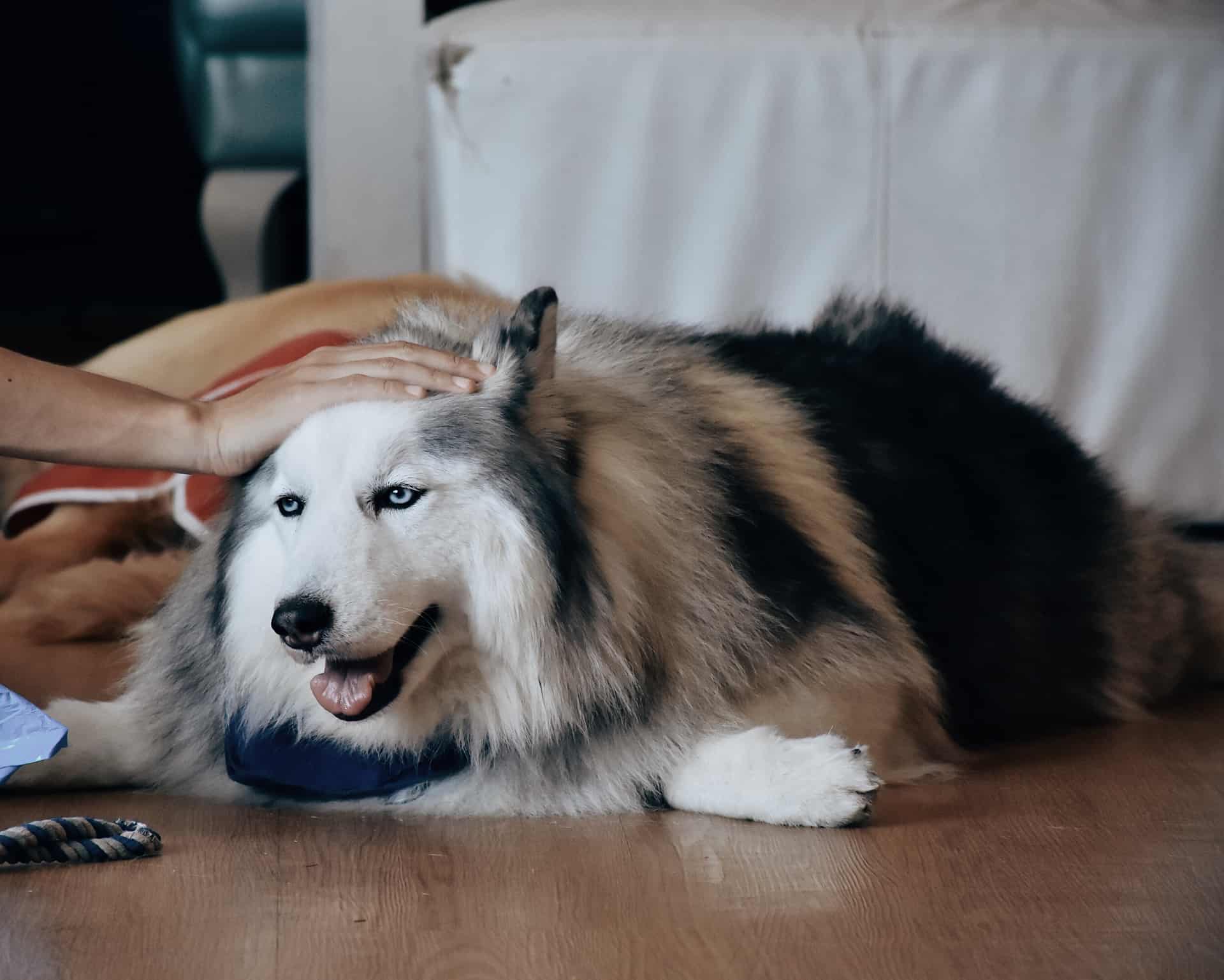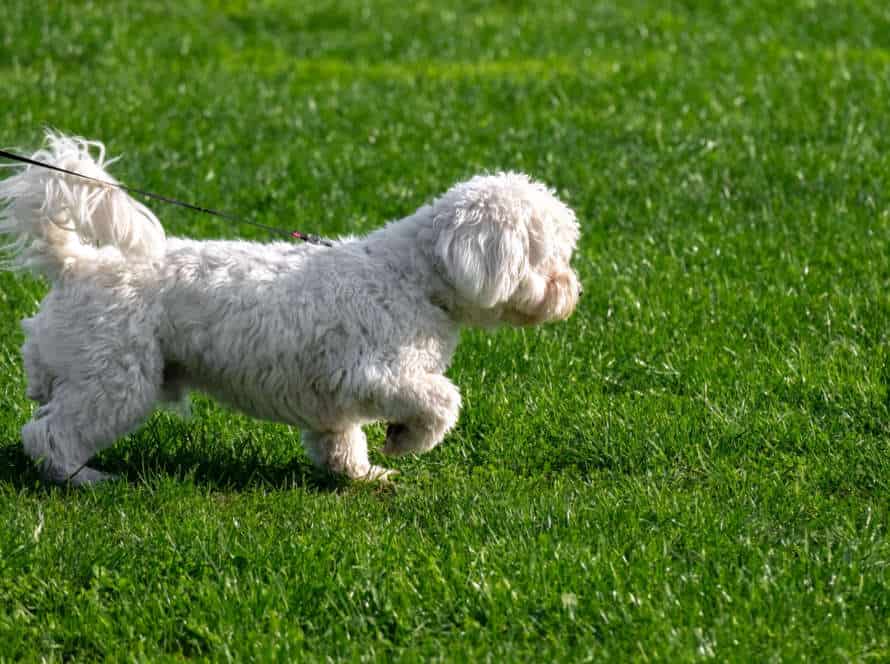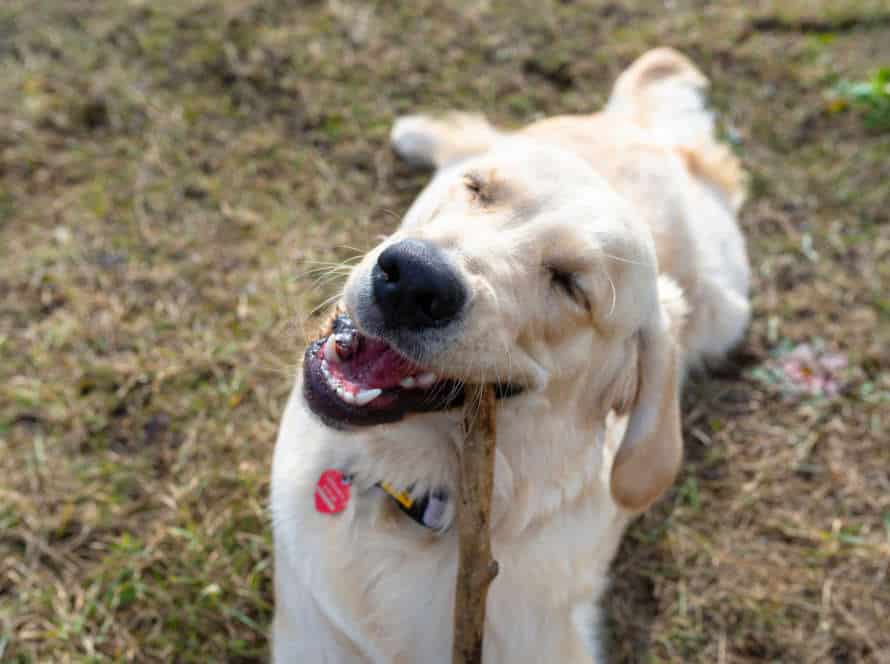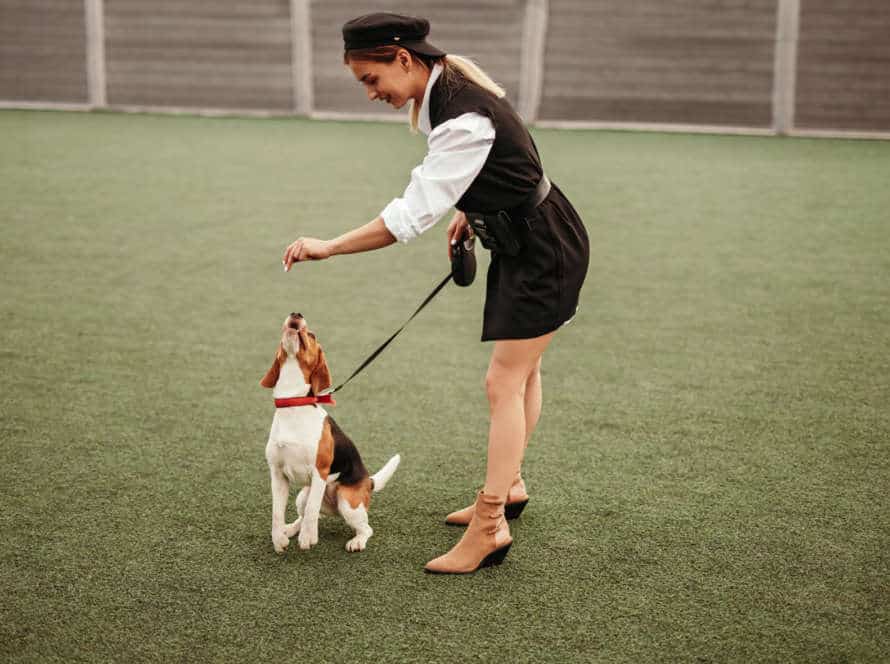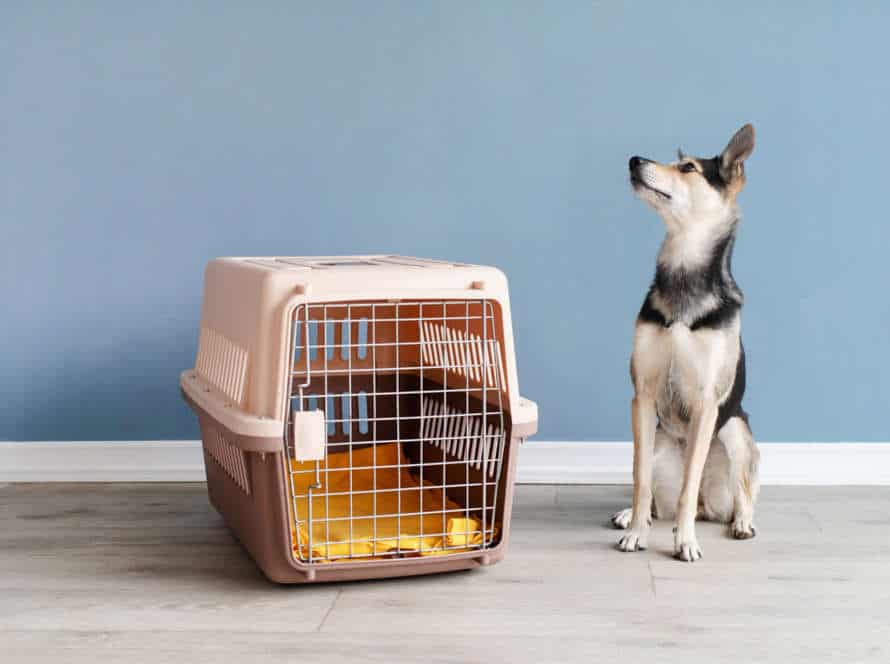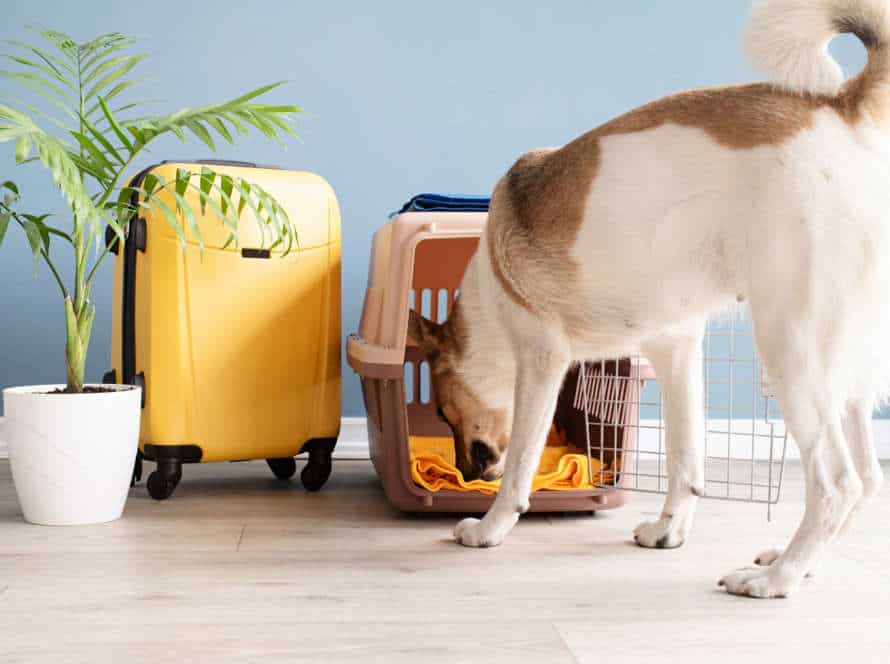The Down-Stay Command: Teaching Your Dog to Hold the Down Position
The down-stay command is key for teaching your pooch. It helps them understand impulse control, patience and manners. Here’s how to teach it:
- Start by training them to lie down on command. Once they’ve got that, add the phrase “stay”.
- Next, practice increasing the duration of the stay. Start with one second, then gradually move up to several minutes.
- Once they can stay for several minutes, practice in different situations and environments. Make it more challenging with distractions or unfamiliar places.
- Reward success and be patient as they learn. Consistent training and positive reinforcement will help your dog master this skill.
Training Your Dog to Master the Down-Stay
Train your pooch to do the down-stay command! It’s a must-know part of doggy education. Not only will it help with self-discipline, but it can keep them safe too. Let’s learn how to teach your pup this valuable skill.
Start with the Basic Down Command
Teach your pup the Down-Stay command with these easy steps!
- Start in a quiet place, using a leash and collar to control your dog.
- Say “Sit“. Then say “Down” and offer a treat.
- Keep your hand on your pup’s back and say “Stay“.
- Gradually increase the time and distance that you ask your dog to stay down.
- Reward good behavior with praise and treats.
- Practice in a calm environment for the best results.
Introduce the Stay Command
The ‘Stay’ command is essential for teaching your pup the down-stay. It’s a basic obedience skill.
To introduce it, start in a quiet, low-distraction area. Tell the command firmly and clearly, make eye contact with your pup, and hold an open palm toward them.
Take one step back. If your pup stays, give them a treat or verbal praise.
Gradually increase the distance and length of the ‘Stay’ command. Reward each success.
When your pup can stay for at least 1 minute, introduce distractions and tougher environments.
Pro tip: Positive reinforcement is needed for successful ‘Stay’ training. Be patient and reward progress, not mistakes.
Combine the Commands: “Down-Stay”
Training your pup to obey the “down-stay” command is a must-know skill. It teaches them to stay put until they’re told otherwise, even with disruptors close by. Here’s what to do:
- Get your doggo in the down position.
- Say “down-stay” in a firm, yet peaceful voice.
- Reward with treats or compliments after a few seconds.
- Keep increasing the period of time and distance as your pup gets better at the command.
- Throw in distractions like toys or other people to help them stay focused.
Always award your canine for succeeding in the “down-stay” command. No punishment allowed! Bonus tip: Regular practice will help your pup gain self-control, making them an awesome buddy.
Practice Tips and Techniques for the Down-Stay
Train your pup the down-stay command! It’s a great way to cultivate good behaviour and build trust between you. When done right, you can use this command to teach your pup to stay still while being alert and aware. Here are some tips and tricks to help you teach your pup the down-stay command.
Use Tasty Treats to Reinforce the Behavior
Giving yummy treats is a great way to encourage your pup while teaching the down-stay command. Follow these tips:
- Use really delicious treats, such as chicken or cheese, when pup holds the down position.
- Say kind words and give them gentle pats.
- Slowly increase the time pup needs to stay down, from seconds to minutes.
- Say “Okay” to signal the end of the down-stay and offer treat and praise.
- Train in a quiet place before you move to busier ones.
- Be patient and consistent – it may take time for pup to master it.
Use Consistent Verbal and Visual Cues
It is essential to use consistent verbal and visual cues when teaching your pup the down-stay command. This will make them understand what you want from them and strengthen their ability to obey your commands. Here are some tips:
- Choose a specific hand signal to go with your verbal command, such as holding your hand flat with the palm facing down.
- Say the same verbal command each time you want your dog to do the down-stay, like “down” or “stay”.
- Be patient and consistent with your cues and reward your pup for following your commands.
- Don’t use negative or confusing cues that may distract them or make them anxious.
By using consistent verbal and visual cues, you can reinforce your pup’s behavior, enhance communication, and form a stronger bond with your pet.
Slowly Increase the Duration of Holding the Down-Stay Position
You can teach your pup to stay in the down-stay position with patience and practice. Here are some tips:
- Begin by telling your dog to lay down and stay for a few seconds, and reward them with treats and praise.
- Increase the duration slowly in multiple training sessions, from 30 seconds to 1 minute, and eventually several minutes.
- Give them rewards for holding the position and help them learn “stay” before moving to “down-stay”.
- Use a release command like “OK” when they have completed it.
- Train them in a quiet environment, then gradually add distractions to build focus and obedience.
- With consistent practice and positive reinforcement, your pup can master down-stay for long periods of time.
Troubleshooting Challenges with the Down-Stay Command
Want to teach your pup the Down-Stay command? It can be tricky but with some effort, it can be done! Issues like the length of time the pup can stay down or finding the right motivation can arise. Check out this guide for troubleshooting tips! You can overcome those common issues for sure.
Your Dog Refuses to Go Down
The down-stay command is an important skill for dogs to learn. However, when they refuse to go down or stay, it can be tough to troubleshoot. Here are some tips:
- Check your dog’s wellbeing. They may be refusing due to being uncomfortable, in pain or sick.
- Make sure you’ve properly trained them. Lack of understanding may be why they aren’t obeying.
- Analyze any distractions. Dogs are easily distracted. Look around for anything that may be distracting them.
- Consider the pace of training. Dogs learn at their own speed. Start with a few seconds and work up to a minute.
By using these tips, troubleshooting the down-stay command should become easier for you and your pup.
Your Dog Breaks the Stay Position Too Soon
If your pup breaks the stay position too soon, there can be a few reasons. Distraction, no proper training or incorrect language cues are some of them. Here are tips to help you sort it out:
- Train in a quiet and controlled atmosphere before attempting in more distracting locations.
- Use words your dog comprehends to help them stay.
- Look your dog in the eye and speak firmly to show what you expect.
- Praise them as soon as they obey and stay in the down position.
- Employ positive reinforcement like treats and toys to reward behaviour and motivate them to keep the down position.
With patience and determination, your pooch can learn to excel at the down-stay command.
Your Dog Struggles with Both Commands Combined
Training your pup to remain in the “down” position can be tough, and even tougher when added to the “stay” command. Here are some tips to success:
- Begin teaching in a quiet setting with no distractions, then increase as your pup becomes more skilled.
- Offer treats and words of encouragement once they do the “down-stay” command correctly.
- If your pup stands or moves during the command, use a leash to guide them back into the “down” position.
- Speak calmly and firmly, showing that the “down-stay” command is not optional.
- Have patience, as some dogs may take longer than others to master the command.
Consistent training and rewards will help your pup learn and remember the “down-stay” command.
Advanced Techniques for Improving the Down-Stay Command
Teach your pup the down-stay command! It’s basic, yet important. Use advanced strategies to help your dog stay put for thirty minutes or more. In this article, let’s look at extra techniques to help your canine ace this command.
Increase Distance and Distractions
To advance the “down-stay” command for your furry friend, you can increase distance and distractions.
Start by taking a few steps away from your pup.
Come back to reward them with treats and praises before releasing them.
Gradually increase your distance until you move out of sight.
Introduce distractions to help pup focus on you.
- Have someone walk by
- Drop a toy
- Make a noise while they stay in the “down” position
Increase distractions as pup learns to ignore them and stay focused.
Remember to reward pup with treats and praises. That’ll reinforce good behavior.
Introduce the Recall Command
The recall command is a must-have for improving the “down-stay” command of your pup. It teaches them to come to you quickly and always when you call. Here’s how to introduce it:
- Choose a vocal cue like “here” or “come” – use it every time you say their name.
- Start with a low-distraction situation, like home or your garden.
- Say their name then the command and reward them with a treat or a compliment when they come to you.
- Gradually up the distance and practice in various settings with different levels of distraction.
- Be patient and consistent with the training, and reward them every time they obey.
Remember, the recall can save their life in an emergency – so make sure to give it priority.
Work with a Professional Trainer or Attend a Training Class.
Working with a pro dog trainer or joining a training class can be a great way to help your pup ace the down-stay command.
A pro can show you how to add distractions, distance, and vary the length of the stay. Plus, a class gives your pup a chance to be around other dogs and learn to stay relaxed.
Don’t forget to practice the command every day and reward success. With enough practice and patience, your pup can stay in the down-stay no matter what goes on around them.
Frequently Asked Questions
Q: What is the down-stay command?
A: The down-stay command is a command that teaches your dog to hold the down position for an extended period of time, even when there are distractions or other stimuli present.
Q: Why is the down-stay command important?
A: The down-stay command is important because it helps dogs learn discipline and self-control, and it can also improve their obedience and responsiveness to other commands. It can also be a safety measure, as it can prevent a dog from running into dangerous situations or running away.
Q: How do I teach my dog the down-stay command?
A: To teach your dog the down-stay command, you will want to start by training them to lie down on cue. Once they are comfortable with this, you can begin to extend the duration of the “down” position gradually, and then work on adding in distractions and distance.
Q: What are some common mistakes to avoid when teaching the down-stay command?
A: Some common mistakes to avoid when teaching the down-stay command include moving too quickly or expecting too much too soon, failing to reward your dog for good behavior, and using too much physical or verbal prompting.
Q: Can all dogs learn the down-stay command?
A: Yes, all dogs can learn the down-stay command with proper training and consistency. However, some dogs may take longer to learn than others, and some may require more patience and repetition than others.
Q: How long does it typically take to teach the down-stay command?
A: The amount of time it takes to teach the down-stay command can vary depending on the individual dog and the training methods used. Some dogs may be able to learn it within a few training sessions, while others may require several weeks or even months of consistent training to master it.

